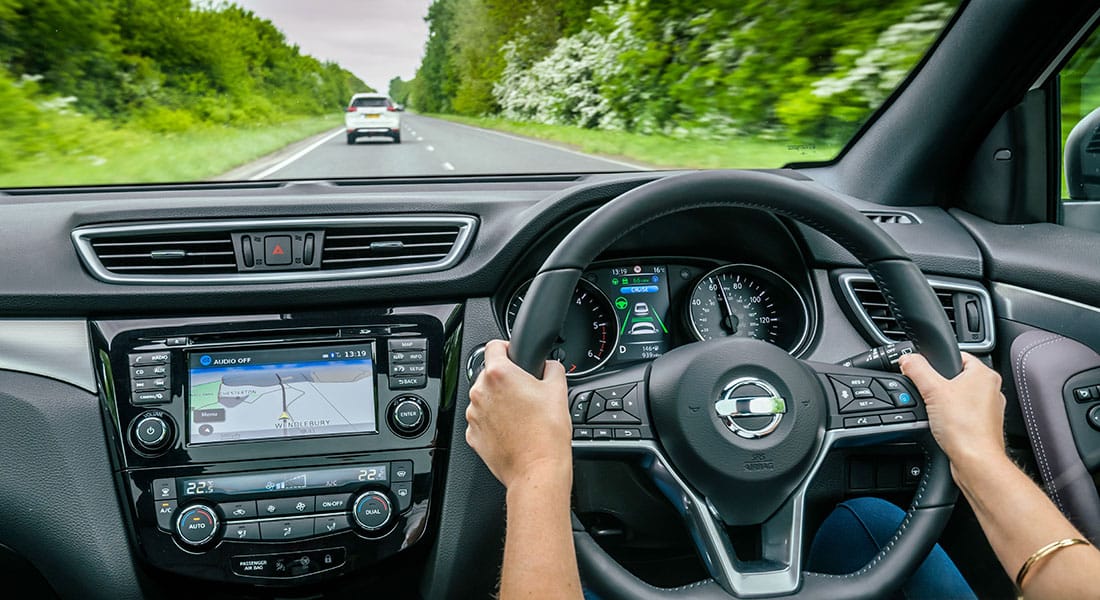Driving an efficient car not only helps you save money on fuel but also contributes to a healthier environment. If you’re looking to maximize your car’s fuel efficiency, here are 10 practical ways to achieve just that.
Why need Your Car More Efficient
Having an efficient car is essential for various reasons in today’s world. Firstly, fuel efficiency directly translates to cost savings, as a more fuel-efficient vehicle consumes less gas, thereby reducing the financial burden on the owner. In addition to personal financial benefits, fuel efficiency contributes to environmental sustainability by reducing carbon emissions and minimizing the overall ecological footprint.
With the global focus on combating climate change, owning a fuel-efficient car aligns with the broader goal of reducing greenhouse gas emissions and promoting a greener planet.
Furthermore, efficient cars often come equipped with advanced technologies that enhance safety, such as collision avoidance systems and adaptive cruise control, making them not only economical but also safer for drivers, passengers, and pedestrians alike. Also, in the carautomix you will get some tips which is how to maintain your car and how to make your car more efficient with some needful car products.
Embracing vehicle efficiency is a step toward a more economical, environmentally conscious, and safer transportation future.
10 Ways to Make Your Car More Efficient
1. Choose the Right Oil for Your Engine
Selecting the proper engine oil might seem like a mundane task, but it plays a vital role in the overall health and efficiency of your vehicle. The right oil not only lubricates the engine but also helps in reducing friction and heat, ensuring your car operates at its optimal level.
Pro Tip: choose for low-viscosity synthetic oils. They reduce friction and improve fuel efficiency.
When it comes to engine oil, one size does not fit all. Consult your car’s manual to identify the recommended oil viscosity and type. Many modern vehicles benefit from synthetic oils due to their ability to maintain viscosity under extreme conditions and reduce engine wear.
Synthetic oils have a consistent molecular structure, providing better lubrication and minimizing friction compared to conventional oils. This enhanced lubrication translates to improved fuel efficiency as the engine doesn’t have to work as hard to overcome friction.
Regularly changing your engine oil, as per the manufacturer’s recommendations, ensures that it remains effective in reducing friction and maintaining engine cleanliness. Over time, engine oil breaks down, losing its ability to provide adequate lubrication, and this can negatively impact fuel efficiency.
Choosing the right oil for your engine isn’t just about viscosity and type; it’s also about selecting the oil that suits your driving conditions. If you frequently drive in extreme temperatures or engage in towing, your engine may benefit from a specific oil formulation designed for these situations.
Investing in the right engine oil might seem like a small detail, but the long-term benefits for your engine’s efficiency and overall performance are significant. Remember, a well-lubricated engine not only runs smoother but also helps in maximizing fuel economy, saving you money at the pump.
Incorporating this simple yet effective practice into your car maintenance routine can lead to a more fuel-efficient and durable vehicle. So, the next time you’re due for an oil change, consider the specific needs of your engine and make an informed choice that aligns with the manufacturer’s recommendations. Your car—and your wallet—will thank you for it.
2. Keep Your Tires Properly Inflated
Maintaining the right tire pressure is often an overlooked aspect of car care, yet it holds the key to unlocking improved fuel efficiency and overall performance. Your tires are the only point of contact between your vehicle and the road, making their condition crucial for optimal fuel economy.
Pro Tip: Check your tire pressure regularly and maintain it at the recommended levels.
Ensuring your tires are properly inflated might seem like a simple task, but the impact on fuel efficiency is substantial. Under-inflated tires increase rolling resistance, essentially making your engine work harder to move the car forward. This increased effort results in more fuel consumption and a decrease in miles per gallon.
Regularly checking and maintaining proper tire pressure is an easy and cost-effective way to enhance fuel efficiency. Invest in a reliable tire pressure gauge, readily available at most auto supply stores, and make it a habit to check your tire pressure at least once a month.
The recommended tire pressure can usually be found in your car’s manual or on a sticker located in the driver’s side door jamb. It’s essential to follow these guidelines, as overinflated tires can be just as detrimental to fuel efficiency as underinflated ones. Properly inflated tires not only improve gas mileage but also extend the lifespan of your tires, saving you money on replacements.
In addition to monthly checks, it’s crucial to inspect your tires before long trips or periods of extreme weather. Fluctuations in temperature can cause changes in tire pressure, emphasizing the need for vigilance in different driving conditions.
Don’t forget about your spare tire – it plays a role too. Ensure it is properly inflated and ready for use in case of an emergency. Many modern vehicles come equipped with a tire pressure monitoring system (TPMS) that alerts you when tire pressure is outside the recommended range. Pay attention to these warnings and address any issues promptly.
By incorporating this simple practice into your routine, you not only contribute to better fuel efficiency but also enhance the safety and handling of your vehicle. It’s a small effort with a big impact, demonstrating that proper tire care goes beyond preventing flats – it’s a key component of a more efficient and economical driving experience.
3. Maintain a Steady Speed
The way you control your car’s speed has a direct correlation with its fuel efficiency. Constant acceleration and abrupt deceleration may seem like second nature in the hustle and bustle of daily driving, but adopting a more mindful approach can significantly impact your vehicle’s fuel consumption.
Pro Tip: Use cruise control on highways to maintain a constant speed and save fuel.
Driving at a consistent speed is a simple yet effective way to maximize fuel efficiency. When you accelerate and decelerate frequently, your engine has to work harder, consuming more fuel in the process. Maintaining a steady speed allows your car’s engine to operate more efficiently and achieve optimal fuel economy.
One handy tool for achieving this on highways is the cruise control feature. Activating cruise control allows your vehicle to automatically maintain a constant speed, eliminating the need for frequent acceleration and deceleration. This not only reduces fuel consumption but also provides a smoother and more comfortable driving experience.
However, it’s important to use cruise control judiciously. In hilly or congested areas, it’s best to rely on your own judgment and control the speed manually. Cruise control is most effective on long, flat stretches of road where maintaining a consistent speed is easily achievable.
Besides the use of cruise control, another technique to adopt is anticipatory driving. Instead of speeding up and then braking suddenly at traffic lights or stop signs, try to anticipate the flow of traffic and adjust your speed accordingly. This not only saves fuel but also reduces wear and tear on your brakes.
Additionally, consider the advantages of maintaining a steady speed during city driving. While stop-and-go traffic is inevitable in urban areas, adopting a smoother and more gradual acceleration and braking pattern can still contribute to improved fuel efficiency.
4. Lighten the Load
The weight your car carries is more than just the sum of its parts—it directly influences fuel efficiency. Many of us tend to use our cars as mobile storage units, accumulating items in the trunk over time. However, that extra weight can take a toll on your vehicle’s gas mileage.
Pro Tip: Remove unnecessary items from your trunk to reduce the overall weight of your car.
Imagine your car as an athlete, and each unnecessary item in the trunk as a set of weights. The more weight your car has to carry, the harder the engine has to work, leading to increased fuel consumption. By decluttering your trunk and removing items you don’t need for your current journey, you’re essentially putting your car on a fuel-efficient diet.
Every extra 100 pounds of weight can decrease fuel efficiency by about 1-2%. While this might seem like a small percentage, it adds up over time, especially for those who spend a considerable amount of time on the road. So, take a moment to clean out your trunk and back seat, removing items that have become permanent passengers but serve no immediate purpose.
Additionally, roof racks and carriers, while convenient for transporting gear, create aerodynamic drag that negatively impacts fuel efficiency. If you’re not using these accessories regularly, consider removing them to reduce drag and improve your car’s aerodynamics.
While the impact of weight on fuel efficiency is more noticeable in smaller and fuel-efficient cars, it’s a universal principle that applies to all vehicles. Whether you drive a compact sedan or a larger SUV, the less weight your engine has to propel, the better the fuel efficiency you’ll achieve.
Reducing your car’s weight not only improves fuel efficiency but also enhances handling and braking performance. It’s a win-win situation that not only saves you money on fuel but also contributes to a safer and more enjoyable driving experience.
5. Regularly Change Air Filters
The air filter in your car may seem like a small and inconspicuous component, but its role in the engine’s performance and, consequently, fuel efficiency is paramount. The air filter acts as a gatekeeper, ensuring that only clean air enters the engine, a crucial factor in the combustion process.
Pro Tip: Upgrade to a high-flow air filter for improved air intake and fuel combustion.
Over time, air filters accumulate dust, dirt, and debris from the environment. A clogged or dirty air filter restricts the airflow to the engine, disrupting the delicate balance needed for efficient combustion. This can lead to a decrease in fuel efficiency, increased emissions, and potentially, long-term engine damage.
Regularly changing your air filter is a simple yet impactful way to maintain optimal fuel efficiency. The frequency of replacement depends on various factors such as driving conditions, air quality, and the type of filter used. As a general rule, it’s advisable to check and replace the air filter according to your car manufacturer’s recommendations.
Consider upgrading to a high-flow air filter for enhanced performance. High-flow filters, often made of cotton or other advanced materials, allow a greater volume of air to reach the engine. This improved airflow facilitates better combustion, resulting in increased power and fuel efficiency.
Installing a high-flow air filter is a relatively easy and cost-effective upgrade that can yield long-term benefits. These filters are washable and reusable, providing both environmental and economic advantages. While they may have a higher upfront cost, the savings over time, combined with the improved engine performance, make them a worthwhile investment.
In addition to fuel efficiency, a clean and efficient air filter also contributes to a healthier engine. It helps prevent contaminants from entering critical engine components, reducing the risk of premature wear and potential damage.
6. Plan Your Trips Efficiently
In the hustle and bustle of daily life, we often find ourselves navigating a web of errands and appointments. However, the way we plan and execute these trips can significantly impact our car’s fuel efficiency and overall environmental footprint.
Pro Tip: Combine errands to reduce the number of trips and maximize fuel efficiency.
Efficient trip planning is akin to creating a roadmap for both your daily activities and your car’s fuel economy. By strategically combining errands, you can reduce the overall distance traveled and optimize fuel efficiency.
Consider creating a checklist of tasks and appointments for the day or week. By grouping errands based on location and proximity, you can minimize unnecessary back-and-forth driving, which translates to less fuel consumption. This not only saves you time but also contributes to a more sustainable and fuel-efficient lifestyle.
Technology can be your ally in this endeavor. Utilize navigation apps that allow you to input multiple destinations and generate the most efficient route. These apps can help you identify the shortest and least congested paths, further optimizing your travel time and fuel efficiency.
Another aspect of trip planning is considering the time of day. Rush hour traffic can lead to prolonged idling and frequent stops, both of which contribute to increased fuel consumption. If possible, schedule your trips during off-peak hours to experience smoother traffic flow and better fuel efficiency.
For longer journeys, plan your route to include well-maintained roads and highways. Poor road conditions, detours, or frequent stops due to construction can negatively impact fuel efficiency. A well-thought-out route ensures a smoother and more fuel-efficient driving experience.
While the convenience of online shopping has become a norm, consider consolidating your purchases to minimize the number of delivery trips. This not only reduces the environmental impact of transportation but also contributes to a more fuel-efficient supply chain.
Efficient trip planning is not just about saving on fuel costs; it’s a mindful approach to reducing your carbon footprint. By adopting this practice, you not only contribute to a healthier environment but also promote a more organized and stress-free lifestyle.
7. Use the Right Fuel
Pro Tip: Check your car’s manual for the recommended fuel type and octane rating.
Using the recommended fuel for your car ensures proper combustion and performance. Using a higher octane rating than necessary is not only a waste of money but can also reduce fuel efficiency.
8. Practice Smooth Driving Habits
Pro Tip: Avoid aggressive driving, sudden stops, and rapid accelerations.
Smooth driving habits contribute to better fuel efficiency. Aggressive driving, such as rapid accelerations and sudden stops, can significantly decrease the number of miles per gallon your car achieves.
9. Regularly Service Your Vehicle
Pro Tip: Follow the manufacturer’s recommended service schedule for optimal performance.
A well-maintained car is an efficient car. Regularly servicing your vehicle, including checking the spark plugs, fuel injectors, and other essential components, ensures that everything is functioning at its best.
10. Embrace Modern Technology
Pro Tip: Consider upgrading to a more fuel-efficient vehicle or explore hybrid and electric options.
If it’s time for a new car, consider one with advanced fuel-efficient technology. Hybrid and electric vehicles are becoming increasingly popular for their environmental benefits and impressive fuel efficiency.
Making your car more efficient is not only good for your wallet but also for the planet. By implementing these tips and embracing a proactive approach to maintenance, you can enjoy a smoother, more fuel-efficient driving experience.



































